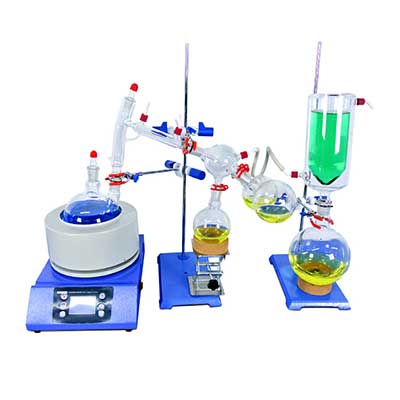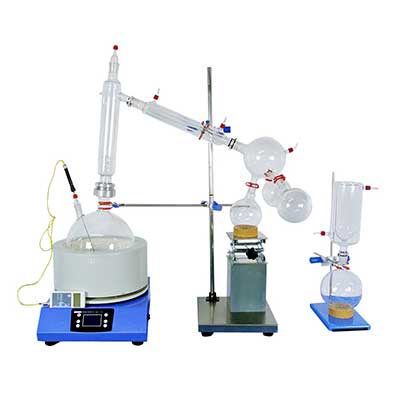News
Best short path distillation kit equipment for sale canada
Short path distillation kit is the main products of ZZKD,It has simple equipment structure, small floor space, high evaporation efficiency and high recovery efficiency, and is mainly used for distillation extraction.The models include:2L short path distillation, 5L short path distillation, 10L short path distillation, 20L short path distillation,etc.

Since most of the distillation parts of laboratory-type short path distillation equipment are glassware, the glass used for short path distillation is particularly prone to be soiled by baking and polymerization contaminants during the long term distillation process. In addition, the structure of the glassware is very difficult to clean.With regard to the cleaning of short path distillation glassware in the laboratory, the traditional methods are as follows.

Traditional methods of cleaning glassware:
1. Use corrosive chemicals for cleaning. This approach has three disadvantages:
(1) When corrosive chemicals are used, the residence time of the glass may be very long in order to break through the plasticized layer, thereby delaying the return to use.
(2)Regulations stipulate that if corrosive chemicals create hazardous working conditions, internal operating procedures should be adjusted.
(3) These chemicals are dangerous to handle at high concentrations and need to be handled safely and correctly.This usually involves signing a contract with a chemical handling service and may involve storing the chemical in a container such as a 55-gallon drum.
One way to overcome the shortcomings of traditional cleaning methods is to use an ultrasonic cleaner, which is a more effective and environmentally friendly alternative.
The principle of ultrasonic cleaning:
Ultrasound is generally described as sound above the range of human hearing, usually greater than 20,000 cycles per second (20kHz).The ultrasonic cleaner is equipped with a sensor connected to the bottom and/or side of the tank containing the cleaning solution.When activated by a generator, the transducer causes the bottom of the tank to act as a vibrating membrane, and its frequency is measured at a speed of thousands of cycles per second (kilohertz), which pulses the cleaning solution in the vessel, causing it to generate waves .
These waves produce millions of tiny vacuum-filled bubbles, which shoot out powerful jets of liquid-about 10,000 psi-and when exploded, the force of implosion can take away contaminants from the object being cleaned.This process takes place so quickly that the cleaning process does not cause any damage to the cleaned parts. The glassware and other equipment used in the laboratory short path distillation equipment are very suitable.
Ultrasonic cleaning is done in the tank, and the ultrasonic cleaner provides tanks of various capacities.When measuring, first clean the size of the glassware, and then choose a jar that can hold them.Since the cleaning is done in the parts basket, its size is slightly smaller than the size of the oil tank of the ultrasonic cleaner.
The cleaning procedure is as follows:
1. Add water and wetting agent, such as tableware and detergent, into the filling pipeline of the ultrasonic cleaner tank.
2. Fill the flask with enough cleaning solution to completely cover the contaminants.
3. Put the bottom of the flask in water without soaking. Trays and clamps can be used to support the flask during the cleaning cycle.
4. Activate the ultrasound. Cavitation passes through the walls of the flask and acts on contaminants.
Send Us Message
Your message was sent successfully.
Sorry!Something Went Wrong.
